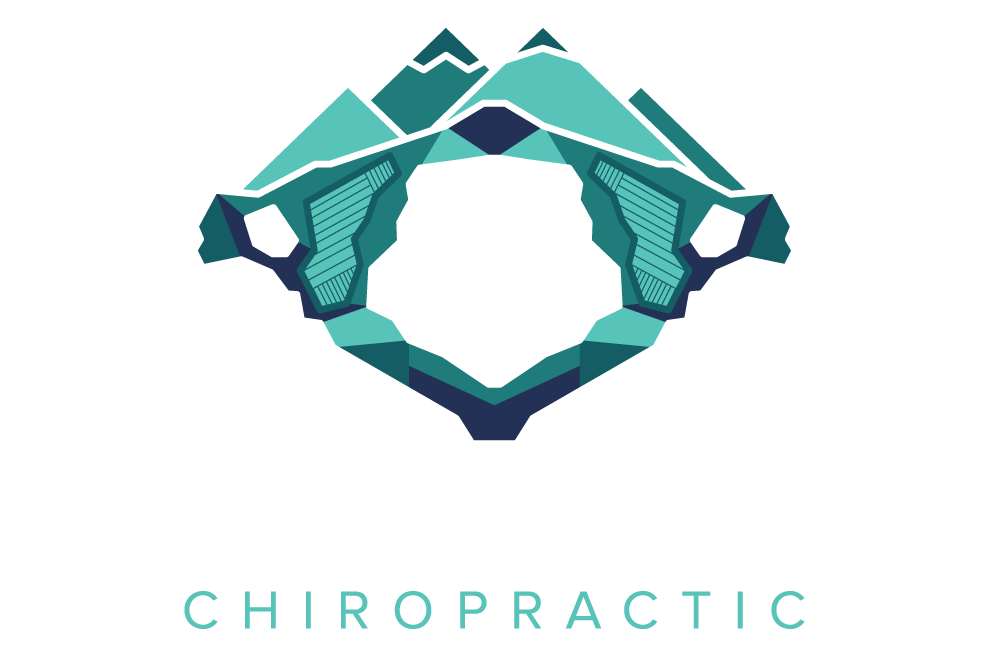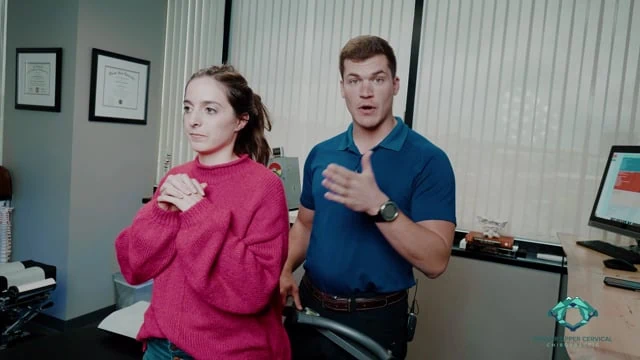Chronic back pain, neck pain, and neurological conditions are not a normal part of aging. Often, the pangs of “old age” are really old injuries that never truly recovered.
A conventional approach to medicine is to treat individual symptoms as if they exist in a vacuum. Pharmaceuticals and harsh, unnatural treatments for disease are often ineffectual at more than masking symptoms.
As an alternative, upper cervical chiropractic care takes a precision approach to not only treating health problems, but giving your body what it needs to thrive from head to toe.
The best upper cervical chiropractic practices walk you through your treatment plan and provide visual results to show you how far you’ve come.
Of course I’d say that — I’m an upper cervical chiropractor.
Unfortunately for the skeptics, both patient testimonials and years of published and peer-reviewed research supports my viewpoint. Otherwise, I wouldn’t be an upper cervical chiropractor.
What is upper cervical chiropractic?
Upper cervical chiropractic care focuses on correcting misalignments in the upper neck region of your spine — called subluxations or, more specifically, upper cervical subluxations.
Upper cervical spine chiropractors concentrate on the upper two vertebrae of the spine, called C1 (atlas) and C2 (axis).
Upper cervical care tends to be gentler than general chiropractic, making it a great option for sensitive patients.
Upper cervical manipulation affects the whole body by adjusting the upper spine, which allows the central nervous system to properly communicate with the rest of your body.
As an upper cervical chiropractor, I use frequent x-rays and 3D technology to determine exactly where a vertebra may need adjustment.
Misaligned vertebrae interfere with the spinal cord and brainstem, leading to ineffective or dysfunctional nervous system signaling.
During an adjustment, I use the Laney Torque Specific Cervical Adjusting Instrument. This state-of-the-art instrument makes incredibly gentle adjustments. Only 65 Laneys have ever been made, and I use the only one in the state of Colorado.
There are many philosophies of chiropractic. At Denver Upper Cervical, our philosophy is that we can show you the before, during, and after effects of your treatment plan by utilizing cutting-edge tech and the most up-to-date scientific literature.
Our patients don’t spend hours each week in the office. Their treatment plans are designed to get them out of the office and back to doing the things they enjoy.
What is NUCCA?
NUCCA stands for National Upper Cervical Chiropractic Association. NUCCA is a leading organization on the standard of care in upper cervical care.
NUCCA procedures are well-researched chiropractic treatment methods that encourage figuring out the exact nature of your misalignment, then gently and safely correcting that spinal misalignment.
NUCCA registered chiropractors (AKA NUCCA doctors) are located across the country, equipped to gently handle spinal subluxations and restore overall health.
Conditions Treated by Upper Cervical Chiropractic
There are many medical conditions treated by upper cervical chiropractic care. The most common are:
- Neck pain
- Back pain
- Headaches and migraines
- Post-concussion syndrome
- Vertigo and Meniere’s disease
- Fibromyalgia and fatigue
- Autoimmune disease
- Blood pressure
- TMJ disorders
- Sleep disturbances
- Trouble breathing
- Muscle weakness
- Poor posture
- Sciatica
1. Neck Pain
Neck pain and shoulder pain are prevalent throughout the worldwide population. It is a primary reason people visit the chiropractor.
Whether it is due to injury or disease, upper cervical chiropractic care has been shown to reverse neck pain and shoulder pain.
2. Back Pain
Millions of Americans suffer from chronic back pain. One of the main reasons for chiropractic treatment is relieving back pain — short-term or long-term.
Counterintuitively, adjusting subluxations in your upper spine may actually reverse low back pain!
Chiropractic treatment may bring immediate pain relief. For some, it may take several weeks of spinal adjustments.
3. Headaches and Migraines
Chiropractic care improves headaches and migraines.
Headaches can be caused by:
Stress, posture, tension, and subluxations are all treatable by chiropractic care. This can lead to reduced headaches and/or migraines.
4. Post-Concussion Syndrome
Post-concussion syndrome (also called PCS) is when your concussion symptoms persist for 6 weeks after the initial head injury. Chiropractors may be able to treat PCS.
Concussion symptoms include headache and dizziness, to mention a few. If concussion symptoms last for more than a month and a half without subsiding, consider visiting a chiropractor right away.
Chiropractic care has been shown to improve outcomes after a concussion, reducing symptoms and helping people get back to their normal lives.
5. Vertigo and Meniere’s Disease
Upper cervical chiropractic care often improves vertigo and Meniere’s disease, which are two closely connected disorders.
Vertigo is feeling dizzy or off balance. Meniere’s disease is a disorder of the inner ear that can lead to vertigo.
Vertigo is a common symptom of Meniere’s disease. Upper cervical chiropractic care may treat Meniere’s disease and its symptoms:
Upper cervical chiropractic care may improve patients’ Meniere’s disease and vertigo symptoms surprisingly immediately.
6. Fibromyalgia and Fatigue
Fibromyalgia is a chronic disorder of the bones and muscles, and its chief symptom is persistent fatigue. Upper cervical chiropractic care is well known to treat fibromyalgia.
In fibromyalgia, signals travel through your brainstem to tell your brain there is pain when there is actually no pain. Spinal readjustments by a doctor of chiropractic correct these signals.
Chiropractic treatments seem to treat fatigue due to other reasons as well.
7. Autoimmune Disease
Doctors of chiropractic treat many autoimmune diseases and inflammatory conditions, such as:
8. Blood Pressure
Hundreds of millions of people in the world suffer from high blood pressure, also called hypertension.
Interestingly, multiple studies indicate that chiropractic care may be able to lower blood pressure in hypertensive adults.
9. TMJ Disorders
TMJ stands for “temporomandibular joint”, but TMJ can also refer to TMJ disorders (TMD), which can be treated by chiropractic care.
The TMJ connects your jaw to your skull. The TMJ is the most used joint in the body. You use the TMJ when:
TMJ disorders (sometimes called TMD) may be caused by:
Trigeminal neuralgia is another disorder that is sometimes confused with TMD. Trigeminal neuralgia is caused by irritated cranial nerves.
Both TMD and trigeminal neuralgia can be effectively treated with upper cervical chiropractic care.
10. Sleep Disturbances
Chiropractors treat low back pain that can lead to sleep disturbances.
Patients widely report improved sleep after chiropractic care.
Because sleep issues can stem from different health problems, results are less consistent than other benefits of upper cervical chiropractic care.
11. Trouble Breathing
Many patients report better breathing capacity immediately following a chiropractic adjustment.
Research shows chiropractic care improves the following disorders that make breathing harder:
12. Muscle Weakness
Chiropractic care can treat muscle weakness, even in stroke patients.
Often, chiropractors will show patients the immediate benefits of chiropractic care by testing strength before and after a spinal adjustment. The before-after strength test exemplifies how effective chiropractic is.
13. Poor Posture
Chiropractic adjustments are known to correct poor posture, also called structural rehabilitation.
Poor posture is widespread across the country. It can lead to headaches, chronic pain, and other health problems if not treated.
14. Sciatica
Sciatica is a condition that results in widespread pain, but sciatica can be treated by chiropractic care.
The sciatic nerve is the longest nerve in the human body. When the sciatic nerve is irritated or compressed, pain radiates throughout your:
Chiropractic care has been shown to treat sciatica, compared to “placebo” spinal manipulations, making the research more reliable.
Are upper cervical adjustments dangerous?
No, upper cervical adjustments are not dangerous. Upper cervical chiropractic comes with very few risks when administered by a credentialed doctor of chiropractic.
The most commonly reported side effect of upper cervical adjustments is muscle soreness.
How are upper cervical and general chiropractors different?
Upper cervical chiropractors focus on the top two vertebrae (C1, called the atlas; and C2, called the axis), whereas general chiropractors spread their attention to the entire spine.
Upper cervical doctors focus on the neck region of the spine because the underlying cause of a lot of chronic conditions, even lower back pain, is rooted in the neck region and upper spine.
Upper cervical chiropractors tend to use gentle manipulations of the neck and spine — also called low force correction.
You won’t see any of those hard-to-look-away YouTube videos of chiropractors cracking necks like a rag doll. General chiropractors are more likely to employ those techniques.
Is upper cervical chiropractic right for you?
Upper cervical chiropractic is right for most people. The majority of the US population lives with physical weakness, chronic pain, or healthcare problems they do not even notice.
Upper cervical care can both treat and prevent countless health conditions, even if you didn’t know you suffered from them.
Not only does scientific research confirm this, but our patients at Denver Upper Cervical Chiropractic prove it every day.
Set up an appointment with us today.

